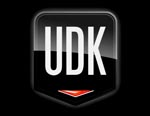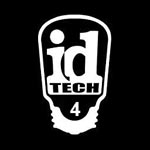
Curse of Mermos
2014
Curse of Mermos - Student Project
I acted as instructor and technical director/artist (particles, lighting, animiation, shaders, performance). Result of 4 months creating a fun and fast paced hack 'n slash title. As the instructor of the course I assissted in the production aspects of the project and practiced common industry methods for development making the classroom environment an indy studio simulation. Was released on Steam!
Rendering Behind Walls
One of the simplest solutins would be to add a second pass to shaders that one wants seen behind a wall. The issue with deferred though is that the z-pass is already established before final shading so there wasn't a way to cleanly render hidden objects without dozens of pixel-sized errors. Instead a 2nd camera running forward was used that matched the primary camera's perspective setup which ran a replacement shader. One the replacements would render select (via shader choice in material) geometry only into the depth buffer (ZWrite On, ColorMask 0). This would prime the second replacement shader used on characters to use a ZGreater check in order to render. The replacement camera only cleared depth and rendered after the deferred passes.




